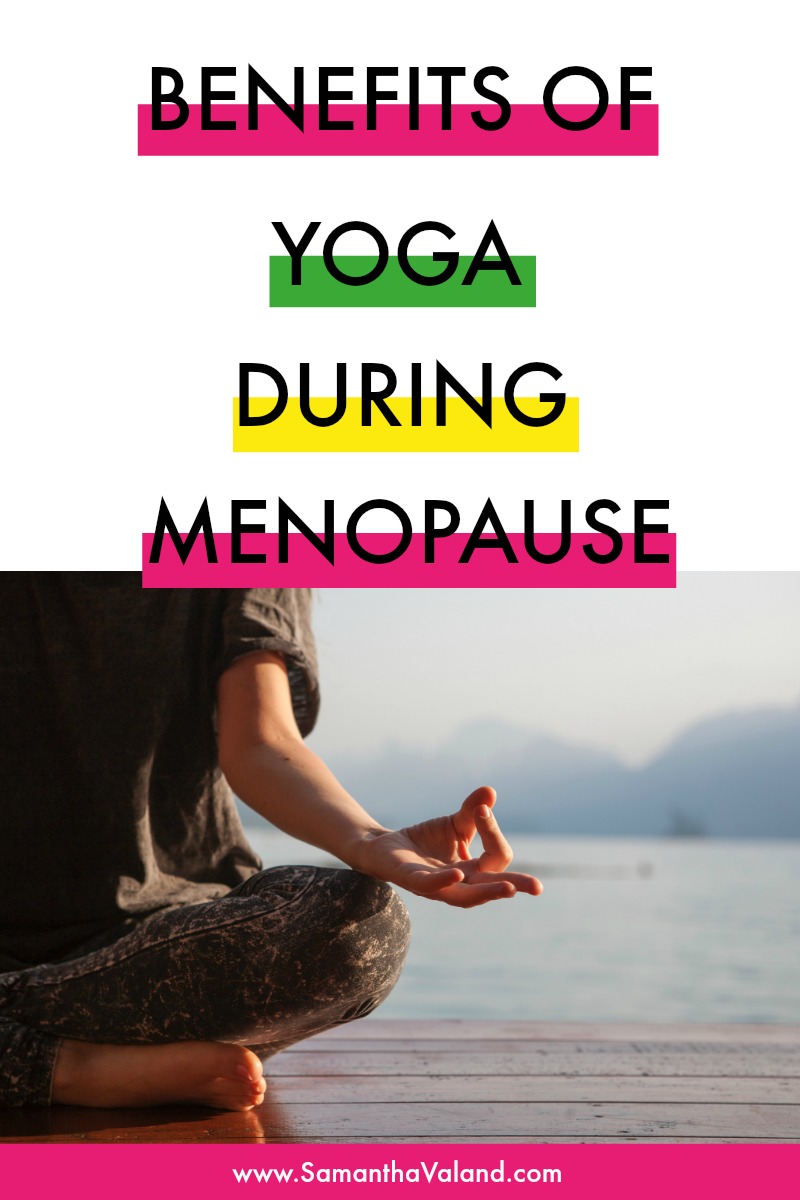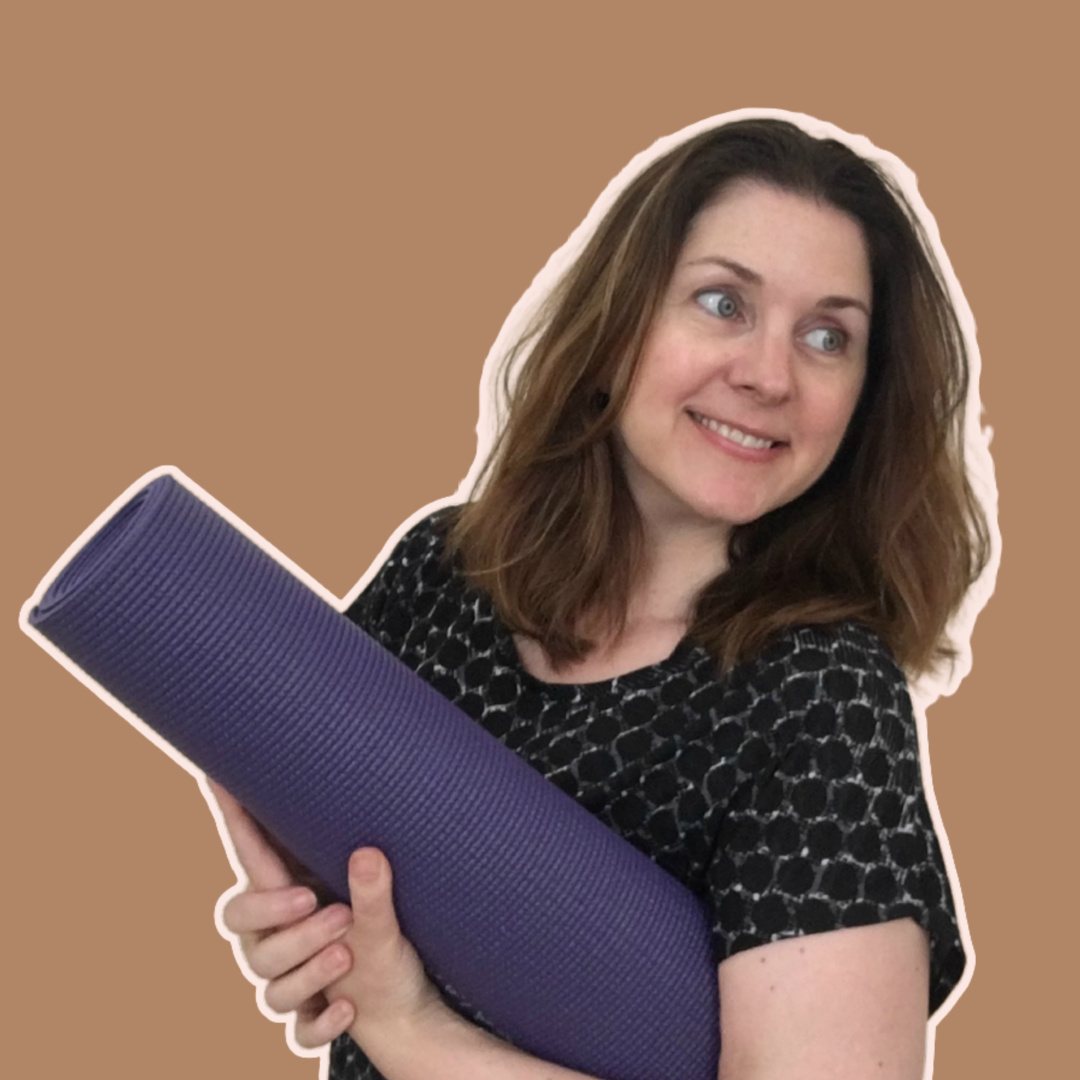Yoga and Menopause
I love yoga, but there are also many things that I don’t like about yoga.
Like many people I took my first yoga class at my gym over a decade ago to stretch and to increase my flexibility.
In 2017 I completed my yoga teacher training which I have blogged about. Hatha Yoga repeatedly comes up as a way to help reduce menopause symptoms.
I deliberately chose a fitness provider for this training as I have found personally that many yoga teachers did not teach yoga in a way that I thought was accessible for every body.
Few teachers would give adaptations and modifications to poses and seemed to expect the class to be fluent in Sanskrit! My first fitness course was in 2006 and I liked how fitness training was structured and I knew it would layer in well with my Pilates training.
Hatha yoga is one of the best ways to reduce menopause symptoms but it is often taught in a way that is not sympathetic to a 50 year old women who is a bit stiff and a bit grumpy!
Here are a few things I would like you to know about practicing yoga.
1) Most yoga classes start in a seated For many of us this is a very uncomfortable position, especially if you have been sitting at a desk all day and you have tight hips. I always recommend sitting on a block at the start of a class. It is one of the simplest ways to improve your posture and make this position so much easier.
2) You will be told to ‘listen to your body’ on a regular basis, which is great advice but a bit of a catch-all statement. What does it really mean? If you have not had any fitness training, you’ll probably struggle to work out why a pose is hard for you to get into. It can be from tight or weak muscles. Sometimes it can be the time of day i.e. if you have spent the last 8 hours sitting at a desk or early morning stiffness. Sometimes the earlier moves in the class have not prepared you enough for this pose.
3) I am astounded by the lack of usage of block, bricks and straps in a yoga class. They can help you get into the correct position and alignment much quicker (see listen to your body). This instantly improves your posture. I generally have my eyes closed when I participate in yoga classes because the posture of the class is generally awful, says the Pilates teacher. Most yoga teachers do not correct this apart from saying ‘listen to your body’!
4) The amount of mediation in yoga class depends on the yoga teacher. Some teachers will not have any, whilst others will have it as a focus. So you may need to try different teachers to fit one that fits. Mediation is usually the last thing you do in the class, it is what you have spent the 90 minutes class getting to that point where mediation is easy! There can be many things that can be distracting in a class environment that you may find home is a better place to do it.
5) There are many different types of breathing, and again it depends on the teacher what type you do and how much of it is included in the class. The simplest breathing will help you to lower your stress in a very quick and easy manner, which is really important during the menopause. You can easily take what you learn in a class and do it as a stand-alone exercise. Many of the breathing exercises you can do very discreetly and not all are Darth Vader style breathing.
6) Sun Salutations are one of the best things to take-away from a yoga class. They are a great way to warm up your body. I personally find most classes do them a bit too quickly. I generally do 4 rounds of Sun Salutations with the first two slow and deliberate and the last two faster to deliberately warm up your body. It is great for any workouts you are doing at home, not just your yoga practice.
7) Mudras or hand gestures may be included in the class or not touched on at all. They work on subtle energies of the body and chakras. Most classes or images you have seen will include chin mudra at a minimum. This is when you open your hand and connect your index figure to your thumb. This is inviting divine guidance in, if your palm is down, you are connecting to your own inner wisdom
8) Yoga can be strengthening it’s not just about flexibility. Yoga is unfortunately known for some specific injuries and these can happen when there isn’t any strength behind a movement. An example of this is ‘yoga butt’, which unfortunately isn’t about getting fab butt through yoga but over stretching in a movement such as a forward fold. The focus is often on touching your toes rather than the position of your pelvis. Going back to ‘listen to your body’, you can easily get your hands to the floor by rounding your back but that is not what this pose is about!
9) Yoga can strengthen your core using Bandhas. I had never heard of them before my training course. There are 3 main ones, one is essentially your pelvic floor, one for your abdominal and one for the neck/chest. (Root, solar plexus and throat chakras). They are an easy way to introduce core strengthening to your yoga poses and I really don’t understand why they are not taught more often – says the Pilates teacher!
10) Many yoga teachers will expect class participants to have their own home practice and may offer different exercise options in class to those who don’t have a home practice which can feel exclusive. Whether you choose to practice at home or keep it to a class is entirely up to you.
11) Practice versus progress. Going back to the Forward Folds it’s an easy goal to want to touch your toes but it’s also one where you will feel like you improve then go backwards depending on what else you do in your day! Tapping into how an exercise makes you feel is the best motivation. It’s not the destination, it’s the journey!
12) Pilates can greatly help your yoga practice. Although the exercises are different, movement isn’t. So, a waist twist in Pilates is the same as a waist twist in yoga. Pilates tends to be more posture focused and aware of spinal position and the teachers can help you identify where and when you are tight.
13) New to Yoga vs Beginner, yoga, Pilates or any exercise needs a beginner’s mindset and curiosity in order to stay motivated and to progress and also to exercise for life. I have been practicing yoga on and off for a decade and I would still say I am a beginner, same with Pilates! Always learning.
14) #YogaEveryDamnDay You can do yoga every day if you want, but yoga doesn’t give you everything your body needs. It doesn’t raise your heart rate and work your lungs. Yoga also doesn’t have any ‘pull’ movements (neither does Pilates) so having a varied workout with many modulates is really important to keep your body healthy
15) InstaYoga Yoga is many things to many people. Your yoga practice may not photograph beautifully but that doesn’t mean it is less than anyone else’s or ineffective. People can be very opinionated on ‘real’ yoga but I think you find out what works for you and keep doing it!
16) Balances your hormones, but only if you find it relaxing! Hatha Yoga is one of the best ways to balance your hormones. However, most classes are 90 mins, which can make it stressful trying to fit it into your schedule. They are often really early or really late classes in a gym. There are many aspects and poses that you can cherry pick out of the class in order to help you reduce your stress levels, without getting stressed just getting there!
17) Find a yoga teacher that matches what you want out of the class. If you want a more spiritual practice, find a teacher who includes that. If you want to learn how to quieten your mind and meditate find a yoga teacher who loves to teach meditation. If you are interested in the physical exercises and how to develop a home practice, find a teacher who specialises in that. Yoga is vast and there are many areas to focus on. Don’t get side tracked by one person’s version of yoga!
18)I love reading how ninety-year-old women are not only participating in yoga classes they are still teaching them too! If you think it is something you will incorporate into your exercise routine to help you age well, start today! What I notice about teaching older ladies’ yoga and Pilates it is their heads that struggle with taking instructions and learning new moves rather than their bodies. So, start today, you may be an expert in 40 years’ time or you may still be a beginner, depending on your mindset!<
19) A yoga home practice is a great way to tune into your own body and mind. It has quite a different vibe to working in a group, and you will find out a lot about your own practice, doing it on your own, in your own space. What do you enjoy, what do you want to skip, what do you need more info on? You will find that out on a home practice rather than a class!
Yoga has many benefits, to get the best out of it, find what works for your, experiment with different styles and teachers, aka kiss a few frogs!
Some yoga teachers will tell you, their way is the only way, but yoga has been around for thousands of years, and there is plently of room for you to find your own style and preferences
P.S. If you enjoyed this blog, you’ll also love this one:
https://samanthavaland.com/why-is-pilates-good-for-you/







